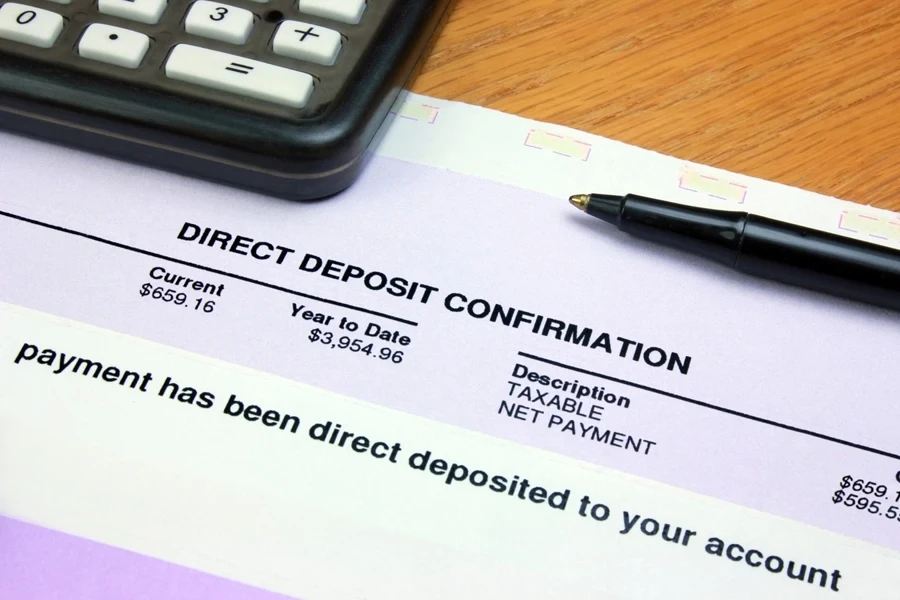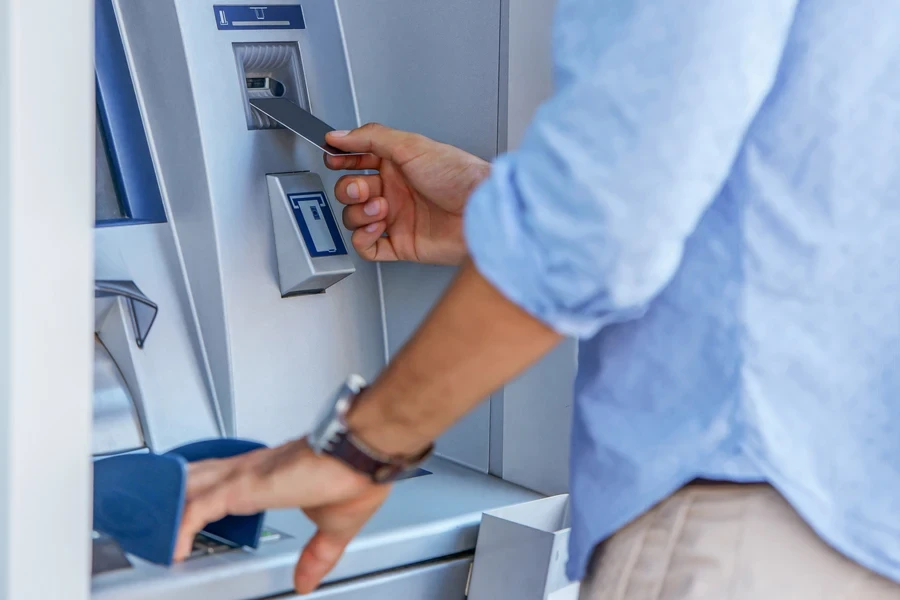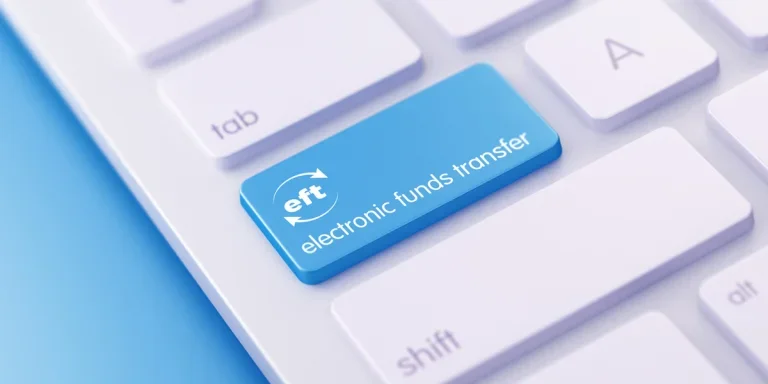When consumers order something online, swipe their card at a store, or pay a vendor through an app, the money moves instantly, with no physical cash or paperwork entering the equation. Instead, it is automated by an electronic funds transfer, or EFT – the backbone of modern financial transactions.
From payroll deposits to online bill payments, EFTs power nearly every digital money movement today, which means they’re absolutely integral to running a business.
In this article, we’ll break down everything you need to know about these digital payment systems and how they stand to help your business.
Table of Contents
What are EFT payments?
How is EFT different from traditional payments?
How do EFT payments work?
7 types of EFT payments
1. Direct deposit (payroll and government payments)
2. Automated clearing house (ACH) payments)
3. Wire transfers
4. Credit and debit card transactions
5. Electronic checks (e-checks)
6. Mobile payments (apps like Venmo, PayPal, and Zelle)
7. Automated teller machines (ATMs)
Why EFT payments are a game-changer for businesses
Rounding up
What are EFT payments?
EFT payments are electronic transactions that transfer money from one bank account to another without the need for paper checks, cash, or physical documents. It’s the broad term for digital payments, like credit card transactions, wire transfers, and ACH payments.
Instead of handling money the old-school way (writing checks, waiting for them to clear, depositing cash), EFTs let businesses and consumers send and receive payments digitally anytime, anywhere. In short, people and businesses around the world use EFTs because of their simplicity and convenience.
How is EFT different from traditional payments?
- Speed: Businesses don’t have to wait for checks to clear or for the receiver to count the cash
- Convenience: Funds move automatically, reducing manual work
- Security: No risk of lost checks or stolen cash unless through hacks and frauds
- Automation: Businesses can set up payroll, supplier payments, and invoices to run automatically
Simply put, EFT payments make money movement seamless and efficient.
How do EFT payments work?
At their core, EFTs work like a secure digital handshake between two financial institutions or parties. Here’s a simple breakdown of how EFT transactions take place:
- The sender initiates the payment. This is the person or business that requests to send money electronically. This could be a payroll deposit, an online purchase, or a bill payment.
- The sender’s bank processes the transfer, verifies the details, and starts the transaction
- The funds move through a payment network. Depending on the type of EFT, the payment might travel through an ACH network, card processing system, or real-time transfer network.
- The recipient’s bank will receive the funds once the payment network approves the transaction
- The transaction is complete, allowing the recipient to access and use the funds
Unlike traditional bank transfers, which can take days, many EFT payments are instant or within hours.
7 types of EFT payments
EFT isn’t a one-size-fits-all system: There are multiple ways money moves electronically. Here are the seven EFT payment methods businesses and consumers use every day:
1. Direct deposit (payroll and government payments)

Most employees get paid via direct deposit. Instead of printing and mailing checks, businesses deposit salaries directly into employees’ bank accounts via EFT.
Employers usually work with third-party services that handle these processes, providing the payment details (i.e., how much each person gets paid and when) for the system to automatically take care of the rest.
Direct deposits are cheaper, faster, and safer than paper checks, and most businesses now use 100% direct deposit for payroll.
- Common uses: Paychecks, tax refunds, social security benefits
- Speed: Typically, same-day or next-day processing
2. Automated clearing house (ACH) payments

ACH, which automates the moving of money between bank accounts, often in batches, is the backbone of EFT transactions in the U.S. It’s also how most direct deposits and bill payments work, with ACH payments often running through a network managed by NACHA and partly run by the Federal Reserve (unlike credit card networks owned by private companies).
ACH transfers usually take two to three business days to process. They can include credit (sending money) or debit (taking money out) transactions. ACH is widely used for business-to-business (B2B) transactions, direct debits, and recurring payments, such as utility bills or gym memberships.
Note: While all ACH payments are a type of EFT, not all EFTs are ACH payments.
3. Wire transfers
Need to send large sums of money quickly? Wire transfers are the go-to method. They bypass processing delays and send funds directly from one bank to another, often within hours.
People and businesses often use wire transfers for big purchases that aren’t part of everyday spending, like urgent, high-value payments. It’s a fast and secure way to move money when regular payment methods aren’t enough.
- Common uses: Real estate transactions, international payments, large business deals, etc.
- Speed: Same day (domestic) and 1-2 days (international)
- Cost: Fees range from USD 15-50 per transaction
4. Credit and debit card transactions

Every time you swipe, tap, or enter your card online, you make an EFT payment. The card network processes the transaction, pulling funds from your bank and sending them to the merchant. Although accepting card payments is necessary for businesses, transaction fees can add up quickly.
- Common uses: Retail purchases, online shopping, restaurant payments
- Speed: Instant (but settlement can take 1-3 days)
5. Electronic checks (e-checks)
E-checks can be thought of as the digital version of paper checks. Instead of mailing a physical check, businesses send payments electronically through ACH. However, they must use their routing and bank account numbers to complete transactions. Additionally, e-checks are popular for B2B transactions because they offer the security of traditional checks without the notorious delays.
- Common uses: Online bill payments, rent payments, invoice settlements
- Speed: 1-3 business days
6. Mobile payments (apps like Venmo, PayPal, and Zelle)

Peer-to-peer (P2P) payment apps have exploded in popularity in recent years. Platforms like PayPal, Venmo, Cash App, and Zelle let users send money instantly from their phones, and this convenience means that more businesses are accepting them. After all, they’re fast, convenient, and widely used by consumers.
- Common uses: Splitting bills, paying freelancers, and small business transactions
- Speed: Instant (if within the same platform)
7. Automated teller machines (ATMs)

When people withdraw or deposit money at an ATM, the machine automatically updates the bank account using an EFT. This system lets users manage their money without visiting a bank in person.
Why EFT payments are a game-changer for businesses
For businesses, switching to EFT payments is no longer a question. Here’s why:
- Faster transactions: No more waiting for checks to clear. Payments go through successfully within hours or days instead of weeks. Remember, it’s a matter of offering consumers the most convenient payment method.
- Lower costs: EFT eliminates expenses related to printing, mailing, and processing paper checks
- Automation and efficiency: Businesses can set up automatic bill payments, payroll, and invoicing, saving time and reducing errors
- Better security: No lost checks, no fraud-prone cash transactions, and businesses will enjoy encrypted, traceable payments
- Improved cash flow: Businesses get paid faster, improving liquidity and financial stability
Whether businesses run payroll, pay vendors, or accept customer payments, EFTs make the movement of money smoother, faster, and more reliable.
Rounding up
Ever since finance went truly digital with the introduction of the Electronic Funds Transfer Act of 1978, businesses and consumers have increasingly relied on electronic fund transfers to send and receive money seamlessly. Today, money operates mostly in the world of computer data rather than as physical cash.
From direct deposits to wire transfers to mobile payments, EFT helps keep the global economy running by making transactions fast, secure, and easy. That’s why choosing the right EFT payment method is so important, greatly simplifying money management for your business.




